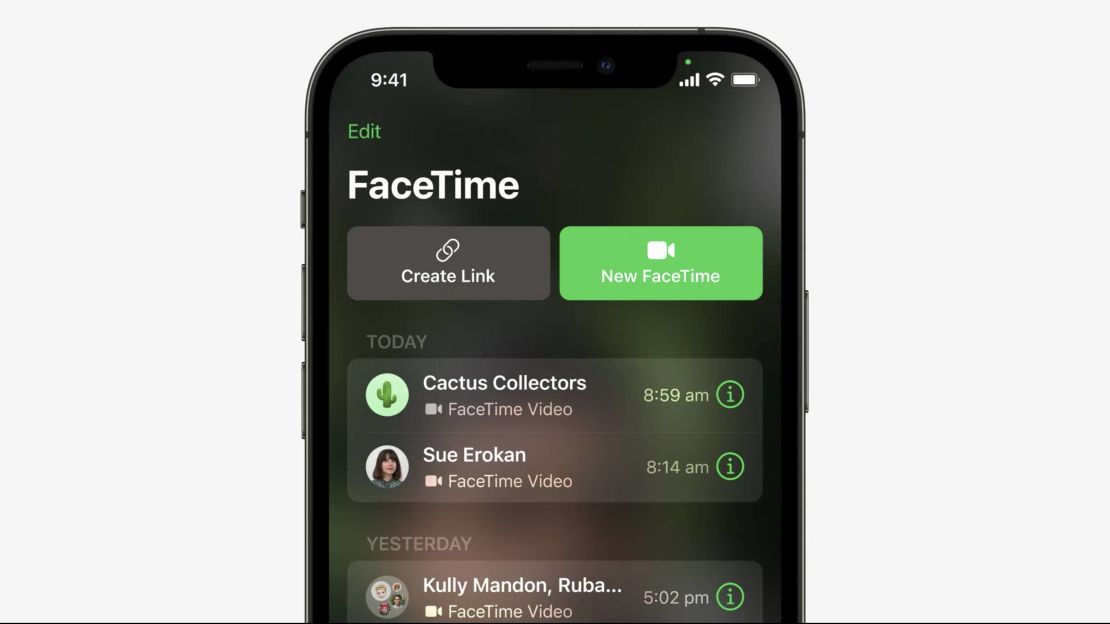Ironically enough, the coolest new iPhone feature Apple announced this week might prevent you from having to buy an iPhone at all. When iOS 15 arrives this fall, iPhone users will be able to invite folks on non-Apple devices to FaceTime video calls, ever so slightly lowering the walled garden that can often make it difficult for iOS and Android users to communicate seamlessly.
While this is great news for iPhone owners who can now bring more friends into the fold, it also means that those outside the Apple ecosystem don’t have to splurge for an iPhone, iPad or iPod Touch just to take advantage of FaceTime. Here’s why iOS 15 gives non-Apple fans a big reason to hold off on an iPhone, as well as the caveats that come with using FaceTime outside of the Apple bubble.
A new era for FaceTime

FaceTime calls are getting a number of promising upgrades in iOS 15, including Spatial Audio for better voice separation on a call, and a noise isolation option that aims to reduce the amount of outside racket that gets picked up.
But the most notable change to FaceTime is the fact that folks on Apple devices will be able to create, schedule and share links to join calls. If that sounds familiar, it should, because it’s pretty similar to what you can do on apps like Zoom and Google Meet. And pretty much anyone can jump into FaceTime calls with those links — even if they’re on an Android phone or Windows PC.
There are some caveats to this. Those using an Android or Windows device will access FaceTime via a web browser on either Google Chrome or Microsoft Edge, which likely won’t result in the same smooth, app-based experience you’ll get on an iPhone or Mac. The device and browser both need to support H.264 video encoding. And some of the more exciting FaceTime upgrades, such as the SharePlay feature that lets you watch movies and listen to music along with friends on a call, are still exclusive to Apple devices.
But the fact that Android and Windows users can get in on something as notoriously locked down as FaceTime is a pretty significant shift for how Apple’s software usually works, and gives Android fans in particular one fewer reason to feel like they’re missing out on iOS. It also makes good on Steve Jobs’ promise when he unveiled FaceTime back in 2010, when he noted that it would be an open standard. This update doesn’t fully bridge the disconnect between the two platforms — Android users will still have to deal with the green bubble of shame when texting their iPhone pals — but it’s certainly a step in the right direction.
This update also happens to arrive at a time when Android cameras are better than ever. The Samsung Galaxy Note 20, our runner-up pick for the best phone you can buy, has an excellent front-facing lens that might even make your friends with older iPhones a bit envious when you join the FaceTime party. Factor in other great camera phones we’ve tested, such as the Galaxy S21 and Pixel 4a 5G as well as PC webcams like the Logitech C920, and you have a ton of dependable options for looking great on FaceTime calls — even if you opt not to get an iPhone or are making the switch from one.
- Galaxy Note 20 (starting at $999; samsung.com) — The Note 20 is our runner-up pick for the best phone you can buy, and takes excellent selfies with its 10-megapixel front camera.
- Google Pixel 4a 5G ($499; target.com) — The Pixel 4a 5G is the best budget phone you can buy, and its front-facing 8-megapixel camera takes great video, thanks to Google’s best-in-class software tricks that will keep you looking bright.
- Galaxy S21 Ultra (starting at $1,199; samsung.com) — With an ultrawide front-facing lens and four cameras on the back, you’ll have no shortage of great ways to show off yourself and the world around you on video calls.
- Logitech C920S ($69.99; staples.com) — The C920S is our pick for the best webcam you can buy, thanks to excellent 1080p video quality that’s perfect for both work meetings and casual catch-ups.
Bottom line
The expansion of FaceTime to Android and Windows devices doesn’t completely fix the disconnect between iPhone and non-Apple devices. We’d love to see Apple go even further and release a platform-agnostic version of Messages so that folks without an iPhone can enjoy features like reactions and replies without feeling like second-class citizens relegated to a green bubble on a screen.
Still, this update does give you one fewer reason to spring for an iPhone if you’re feeling left out of your friends’ weekly FaceTime catch-ups. Now the Android phone or Windows laptop you already have will be perfectly fine for FaceTime calls, and if you’re considering making the switch from iPhone to Android, you can do so knowing you won’t miss out on this popular feature.
If you don’t feel like waiting for iOS 15 to roll out, there are plenty of great video calling apps that work across iOS and Android, including Zoom, WhatsApp and Discord. But if your friend group (or your less tech-savvy family members) are insistent on using FaceTime, they’ll soon have no excuse for leaving you out of the fun. And you just might save yourself from dropping upward of $1,000 on a new phone just to see their faces.
Apple’s iOS 15 is currently available as a beta for registered developers and Apple will release the public beta in July. If you’re eager to try FaceTime on a non-Apple device, that’ll be your first chance.




















